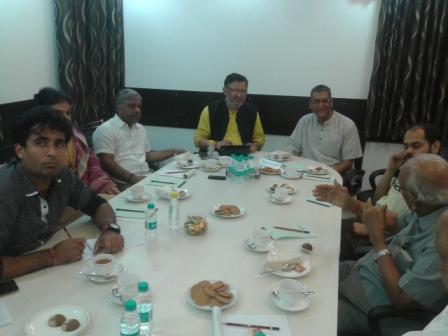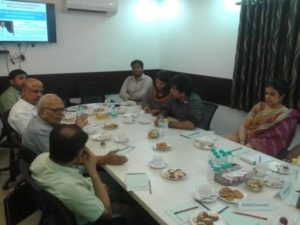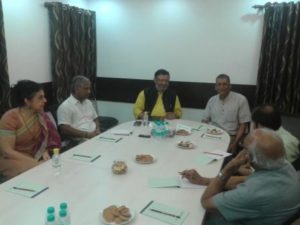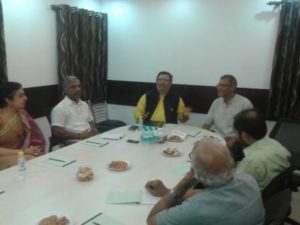Home » SPMRF Round table series : 27th May 2016 Discussion on “Cultural links: India and South-East Asia”-present achievements & future possibilities




- Dr. Syama Prasad Mookerjee Research Foundation (SPMRF) organized a discussion on “Cultural links: India and South-East Asia”-present achievements & future possibilities, on 27th May 2016 with Mr. Rahul Goswami, UNESCO Expert on Intangible Cultural Heritage (ICH) & Advisor, UNESCO, Regional Institute in Asia-Pacific Region for Training in Intangible Culture Heritage (CRIHAP), Beijing. The discussion was chaired by Mr. Shakti Sinha IAS (retd) who is Former Chief Secretary Goa, Former Power & Finance Secretary Delhi, Former Jt. Secretary PMO, Member, SPMRF Advisory Council.
The discussion focused on the cultural links of India with Southeast Asian nations and how the new dynamism in terms of India’s “Act East Policy” can be fruitful in building up on those relations.
Mr. Rahul Goswami began his talk by tracing the cultural relationships between India and Southeast Asia back through histories. He showed through his PPT slides that how symbols and structures used in India and many countries in Southeast Asia i.e. Indonesia and Thailand are proof of shared culture and civilization. He said that “The cultural ties illustrates a key stepping stone to build efficient and seamless connections for a more cooperative, prosperous, and integrated region. The temples and monasteries of Angkor Vat in Cambodia, Borobudur in Indonesia, Shwedagon in Myanmar, to name just a few, are standing testimonies to the strong ties that have existed between India and this region. Suvannabhumi, the golden land, is a term frequently used for Southeast Asian region.”
He also spoke of how in past Indian culture has influenced the development of kingdoms and empires like Srivijaya in Sumatra and the Majapahit in Java, Bali and the Philippine archipelago. Indian influence is still visible today in Southeast Asian architecture, food, pop culture, language and religion. What is most remarkable of this spread of culture is that it was not spread by means of conquest or threat to life of an individual or society but by means of voluntary acceptance of cultural and spiritual values of India. This lesson also brings forward the beautiful idea that peace and friendship with other nations, other societies, other religions and other cultures help our lives and make it more meaningful. He also said that “The most important source of study of the remains of this cultural intercourse and impact are the Sanskrit inscriptions written in Indian script. These have been found all over the Southeast Asian region and a study of these inscriptions and other literature shows that the language, literature, religious, political and social institutions were greatly influenced by India.”
The challenges and prospects of how to build the relations stronger were looked into and discussed as well. Among those who participated were Mr. P.P. Shrivastava I.A.S. (retd), Former Member, North-Eastern Council, Dr. Uttam Sinha, Fellow, (IDSA), Amb. R. Dayakar, former ambassador to Iraq and West Asia and other young scholars and researchers.
Post Views: 1,295
Related





